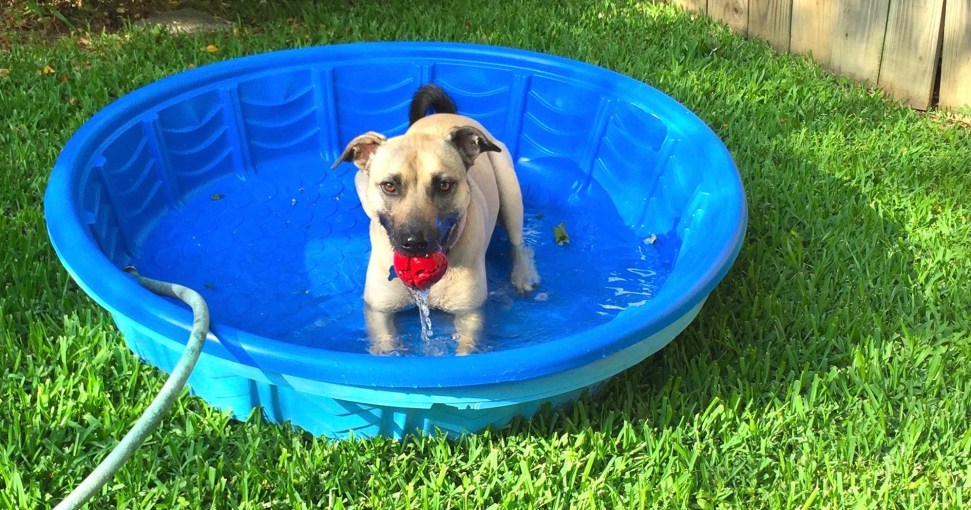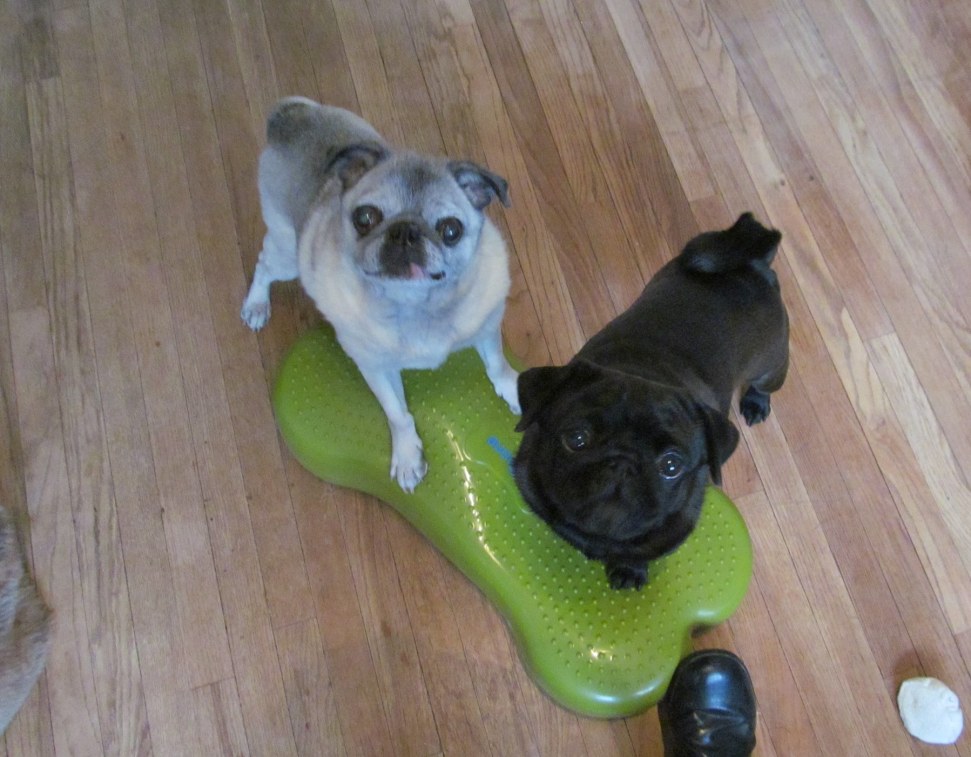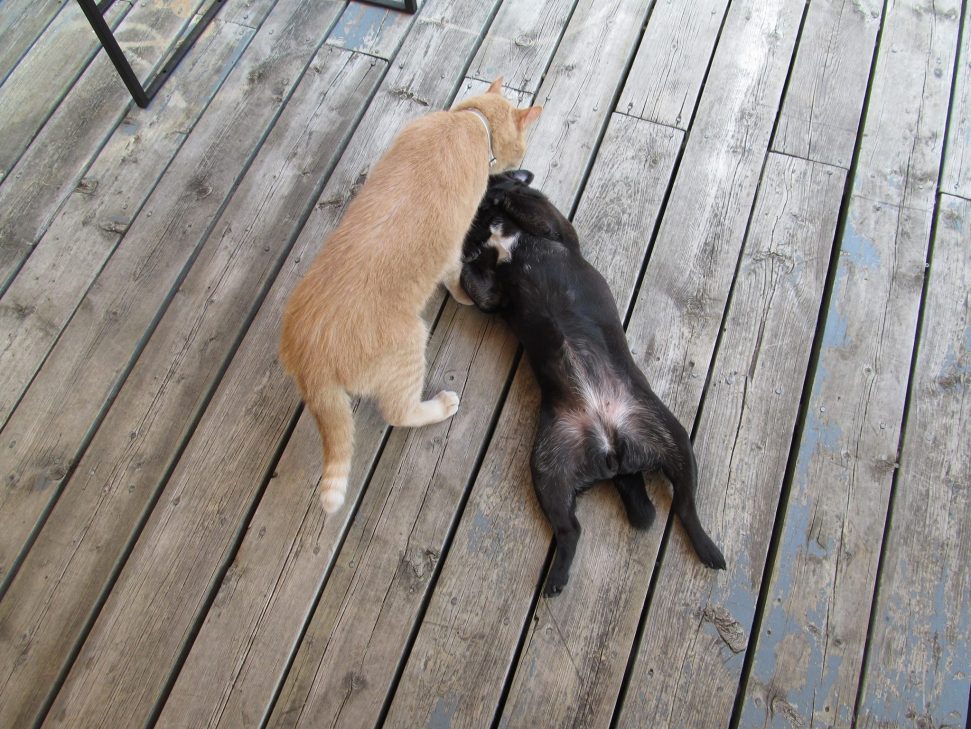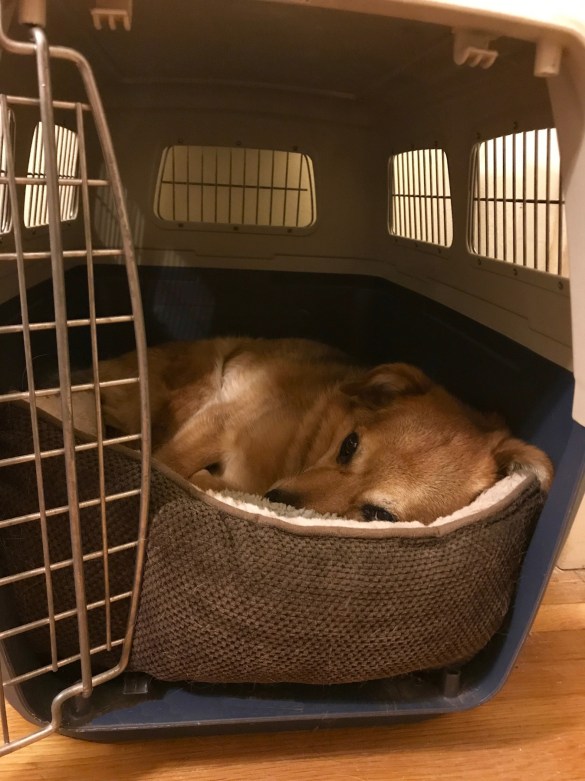Barks Blog
The Opposite of Force
I think I’ve figured something out.
I continue to see the concept of choice bandied about the positive reinforcement-based training world. It can be a code word for a setup that includes negative reinforcement. “I’m going to do something physically unfamiliar or unpleasant to you and you have the choice of staying here and getting a piece of food or leaving and being relieved from whatever it is I’m doing.” I’ve suggested that this is not a laudable kind of choice; as trainers we can use our skills and take our time so that the dog doesn’t want to leave in the first place.
It can also refer to human-centric preference tests, many of which are subject to extreme bias.
But here’s my new realization. I think we have grabbed hard onto the concept of choice because it seems like the opposite of force.
- Instead of pushing the dog’s butt down into a sit, I don’t. The dog now has a choice.
- Instead of restraining the dog for nail trims, I don’t. The dog now has a choice.
- Instead of pulling the dog away from the fire hydrant by his leash and collar, I let him sniff, or I give a cue for another behavior that I will strongly reinforce. He has a choice.
But there is a semantic mismatch here. Force and choice are not opposites.
Force has to do with our actions. In force-based training a human might push, pull, loom over, shock, scare, or drag a dog to get or stop behavior. Those are all concrete, describable actions. The human performs them.
Choice has to do with an internal state of the dog. We conject about it. We pat ourselves on the back for “giving him a choice.” But “making a choice” is not an observable behavior; it’s an internal event. We see the behavior that follows it.
Not only that, but whatever internal state that might exist when we explicitly “give the dog a choice” may also exist when we are not doing this. It doesn’t depend on us. We don’t have to be the center of the “choice universe” for dogs.
Shock collar trainers often say the dog has a choice, and they are correct. The dog, once it understands the system, can “choose” to endure the pain or can “choose” to perform the behavior that turns the painful stimulus off.
I’m not equating positive reinforcement based training with shock training. I’m pointing out that the presence or absence of choice is not the difference between them.
The Opposite of Force
So if force refers to a human behavior, what is the opposite? We can’t say “not using force.” That’s a dead man behavior. What human behavior/s are the opposite of using force on an animal?
Force on our part limits and constrains the animal’s choices, besides often causing pain or fear. Therefore:
I’m going to suggest that in a practical way, the opposite of using force is to proactively remove physical barriers (when safe) and provide lots of simultaneous opportunities for positive reinforcement and enrichment.
This is an undramatic thing for us to do. It means noticing what our dogs like and providing opportunities for them to do it. It means being flexible enough to work around them if a dog suddenly discovers something fun that was not part of our plan. It means not demanding a dog’s attention when she is happily doing something that doesn’t involve us.
That last one—not demanding the dog’s attention—can be hard. My rat terrier, Cricket, slept in the bed snuggled up to me her whole life, even after she had advanced dementia. During this time, young Clara slept in a crate right next to my bed. Summer slept in a crate on the bed. (She had been aggressive to Cricket in the past.) Zani was free to be where she wanted, which was usually somewhere on the bed.
After Cricket died, I did away with the crate on the bed and put no constraints on where Summer and Zani slept. I decided not to let Clara out of her crate at night right away. She had always slept there with no apparent frustration. I wanted to give the other dogs a chance to develop new routines. They had seniority. I assumed they would sleep with me.
But they didn’t. Neither Summer nor Zani slept on the bed with me for several months after Cricket died. I missed Cricket and was lonely. A couple of nights I closed the bedroom door with the dogs inside just to have some company, but I felt bad. That was against my beliefs.
So you could say that after Cricket died I “gave the dogs choices.” But let’s operationalize that. What I actually did was to remove barriers (keep the baby gate and other doors open, remove and open up Summer’s crate) and make sure there were lots of comfortable sleeping places all over the house.
Finally, I let Clara out. She got on the bed with me and never looked back. The other dogs eventually came back and have their own quirky sleeping habits.
Two other examples:
- I leave my back door or doggie door open when I’m home and the weather allows. The dogs can come and go. I have to put some limits on this because of safety and social concerns (neighbors) but I do it when I can. You can say I “give them a choice.” But what I am doing is leaving a door open and thus providing simultaneous access to multiple forms of reinforcement and enrichment.
- Clara prefers to drink fresh, running water, an apparent carryover from her feral days. When we have been out and I pour some water from a plastic bottle into a bowl, she likes to drink out of the stream as I pour. If I stop because there is an inch of water already in the bowl, she’ll lap a couple of times, then bump my hand with the bottle until I pour again. This is a pushy behavior but no harm done. I always arrange it so Clara can drink out of the bottle if she wants. I didn’t have to teach her this. I just had to pay attention.
The Fine Line
All this choice talk causes me to worry on behalf of people who are new to training and maybe even new to having a dog as a family member. Giving a dog too much freedom too soon is such an easy mistake and we may be encouraging it in the wrong places. My dogs would love to be underfoot when I cook in the kitchen and wait for me to drop a crumb, but it’s not safe. Hence I have trained them to stay on mats. They would love to run around snatching items from visitors, but I have taught them alternatives. They would love to chew up my furniture and hey—peeing feels good wherever you do it. But I have taught them to chew their own stuff and to pee outside.
Training dogs to live with us involves limiting choices, especially at the beginning. There is no way around that. I think the way to mitigate it is to give them as many opportunities for reinforcement and enrichment we can within the confines we set. There are more limits with puppies or dogs new to our household; we can relax them as the dogs mature, habituate, and learn through training how to thrive in a human household.
Even though it limited her choices in the short term, one of the best things I ever did for my household and for Clara was to keep her crated at night as a youngster. I was consistent. Letting her be unconfined at night before she was house trained and before she had learned to leave my stuff alone would have created many problems. The tippy situation with the older dogs would have made it dangerous. And letting her out before she was ready would have broken both our hearts (permit me that small anthropomorphism) when I was later forced to crate her again for another long period.
Providing Enrichment
So you can train your dog “yes and no” (although it’s much trickier than most methods allow for). You can set up husbandry methods planned around the dog leaving periodically, and call that “giving the dog choices.” Or you could, much less dramatically, observe what your dog likes throughout his life and give him opportunities to do it. You could provide multiple concurrent sources of enrichment. You could notice when he expresses a preference in his own way and honor it when you can. You could practice self-control on your own desires to influence your dog to pay attention to you or stay with you when it is not necessary.
Force is something humans do to dogs. Setting up an enriching life and training with positive reinforcement are the opposites of that. Those are the behaviors we humans can do so our dogs can make choices.
Text and photo of Clara copyright 2017 Eileen Anderson
Photos with pugs and the pugcat copyright 2017 Blanche Axton. Thank you, Blanche!




